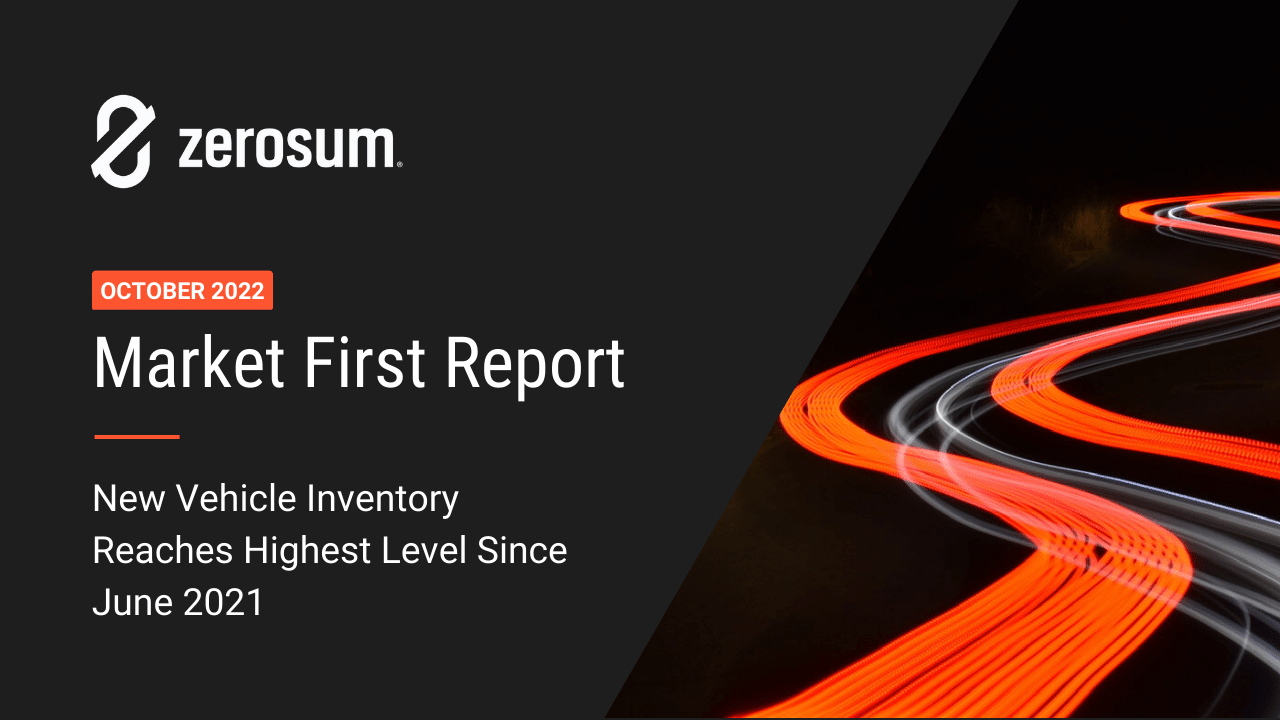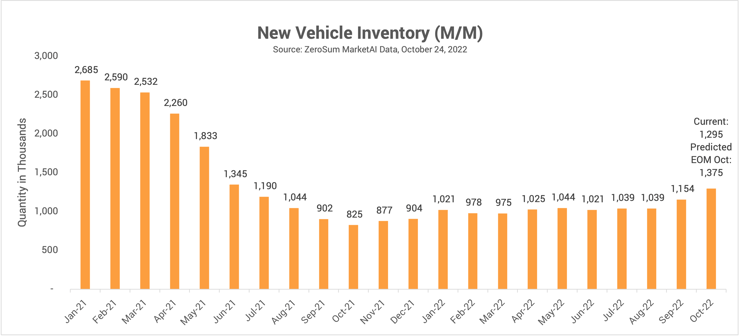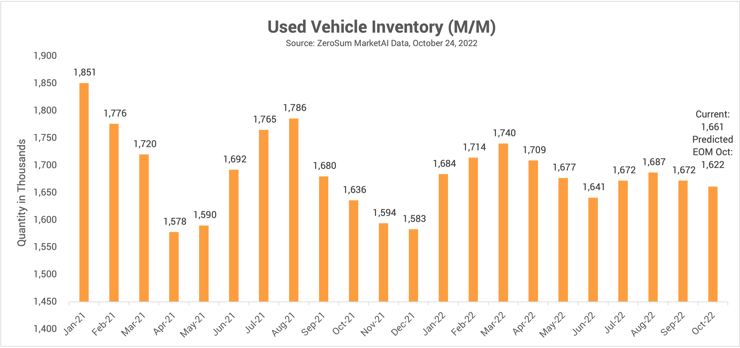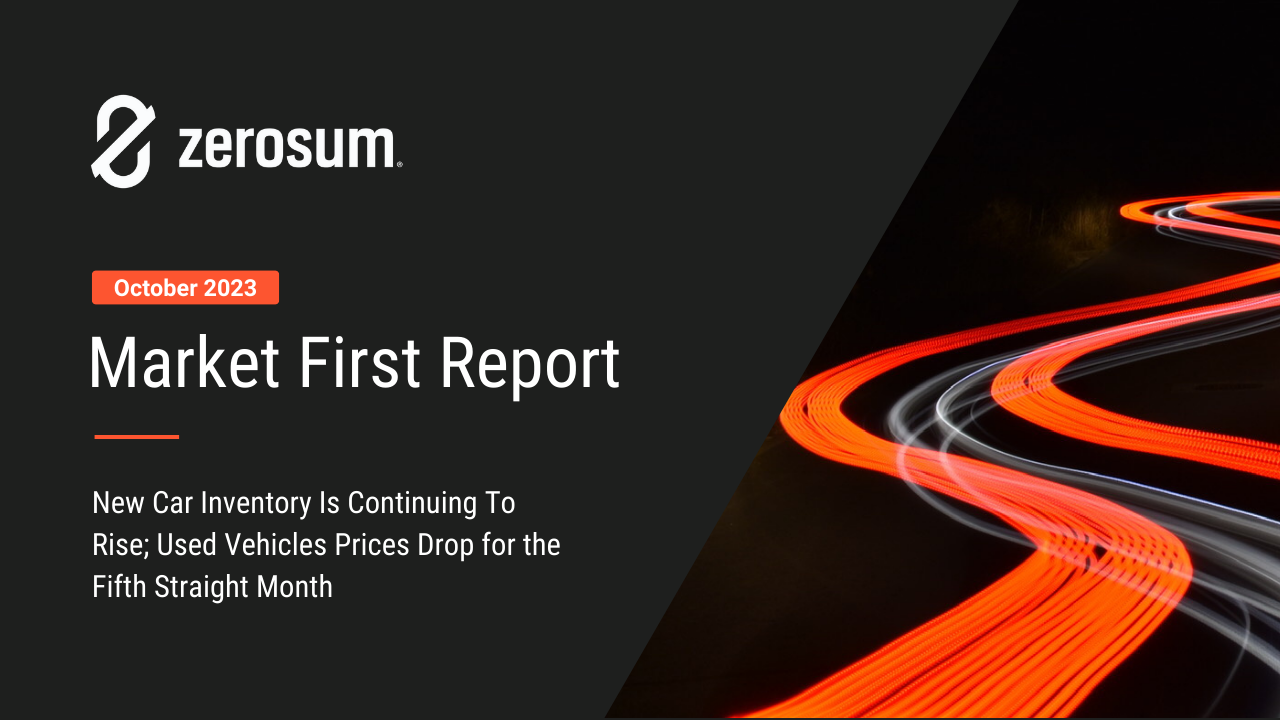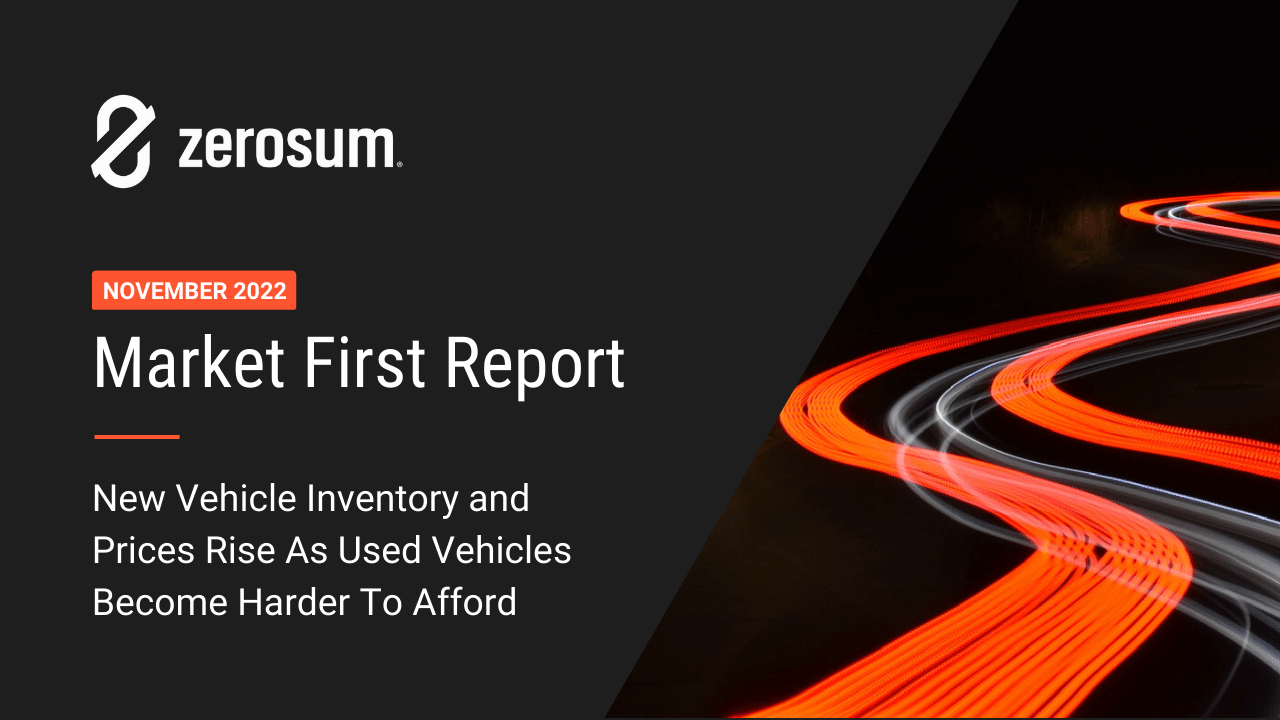ZeroSum Market First Report October 2023: New Car Inventory Is Continuing To Rise; Used Vehicles Prices Drop for the Fifth Straight Month
The ZeroSum Market First Report is the automotive industry’s first source to predict month-end vehicle movement, providing vital supply and demand...

